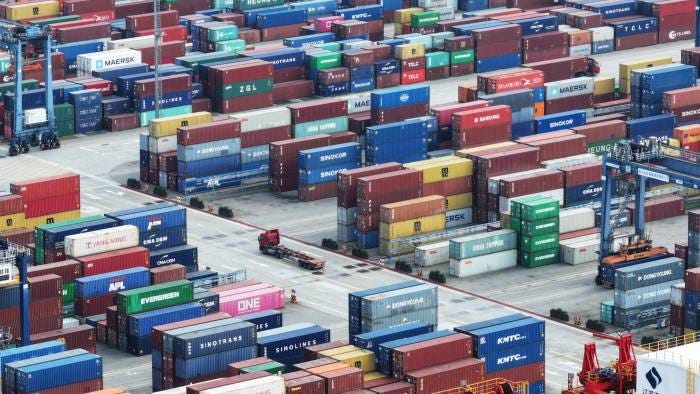Markets need to recognise that the country is not reverting to its old economic and financial playbook
the health strategist . institute
institute for
health transformation and digital health,
data driven & AI powered
Joaquim Cardoso MSc.
Chief Research Officer (CRO), Chief Editor,
Chief Strategy Officer (CSO), and
Independent Senior Advisor
What is the message?
It is no longer guaranteed that China will become the world’s largest economy.
The author, Mohamed El-Erian, discusses the challenges and limitations facing China’s economy, including
- weak growth,
- structural issues,
- high indebtedness, and
- external trade uncertainties.
China is unlikely to revert to its old economic stimulus measures and suggests that the country is shifting towards a new growth strategy focused on sectors like
- higher value-added manufacturing,
- green energy,
- healthcare,
- artificial intelligence, and
- life sciences.
The article concludes by highlighting the complexity of China’s economic transformation and the uncertainty surrounding its future as a global economic powerhouse.

One page summary
Mohamed El-Erian, the president of Queens’ College, Cambridge, and an adviser to Allianz and Gramercy, challenges the conventional belief that China is destined to become the world’s largest economy.
He presents a compelling analysis of the current economic landscape in China and the challenges it faces, suggesting that the country’s trajectory is far from certain.
There is a widespread anticipation among economists and Wall Street analysts that China would embark on a stimulus effort akin to the one seen in 2008 to reinvigorate its economy.
However, he asserts that the reality is shaping up differently, with the more likely scenario being continued weak economic growth. The central policy question now is how quickly China will transition from stimulus measures to a fundamental overhaul of its growth strategy.
The author identifies two major factors contributing to China’s underwhelming economic performance in 2023.
- Firstly, there has been a lackluster recovery following the easing of strict zero-Covid restrictions, and
- secondly, the nation faces persistent and structural growth challenges.
These challenges stem from an economic strategy historically reliant on real estate, high local debt, inefficient state-owned enterprises, lower-end manufacturing, and domestic consumer internet platforms.
Moreover, regulatory overreach, ongoing geopolitical tensions, and reduced foreign direct investment inflows have exacerbated these issues.
Concerns have arisen about the possibility of a Japan-style deflationary trap, further raising doubts about China’s attractiveness to foreign investors.
China’s significant financial issues, including pockets of high indebtedness could evolve into systemic risks.
This limits the feasibility of traditional stimulus measures. The fragile state of the property sector has made households cautious about spending, posing an additional hurdle to growth. Concerns about youth unemployment persist, exacerbated by the government’s decision to halt the release of relevant data.
On the external front, the outlook for trade and investment appears equally problematic.
There is a growing realization that the decoupling of the Chinese and US economies is likely to continue, potentially disrupting exports, industrial inputs, foreign direct investment, and portfolio investments.
The article underscores the Chinese leadership’s reluctance to rely heavily on traditional stimulus measures, fearing that it might hinder China’s escape from the middle-income trap and increase the risk of corruption.
Instead, the authorities are likely to focus on a gradual transition to new growth sectors such as higher value-added manufacturing, green energy, healthcare, artificial intelligence, supercomputing, and life sciences. However, this shift will take time and involve creative destruction, which may initially detract from growth.
In conclusion, El-Erian urges the markets to recognize that China is no longer following its old economic playbook, and its return as a dominant driver of global economic growth is unlikely in the near future.
- Lackluster economic performance is expected to persist in 2023 and the first half of 2024.
- Beyond this, the outlook remains uncertain, with the daunting task of reorienting the Chinese economy amid ongoing geopolitical tensions and the need for greater support for the private sector’s role in driving growth.
This is based on the article “It’s no longer a given that China will become the world’s largest economy”, published on the Financial Times, and authored by MOHAMED EL-ERIAN












